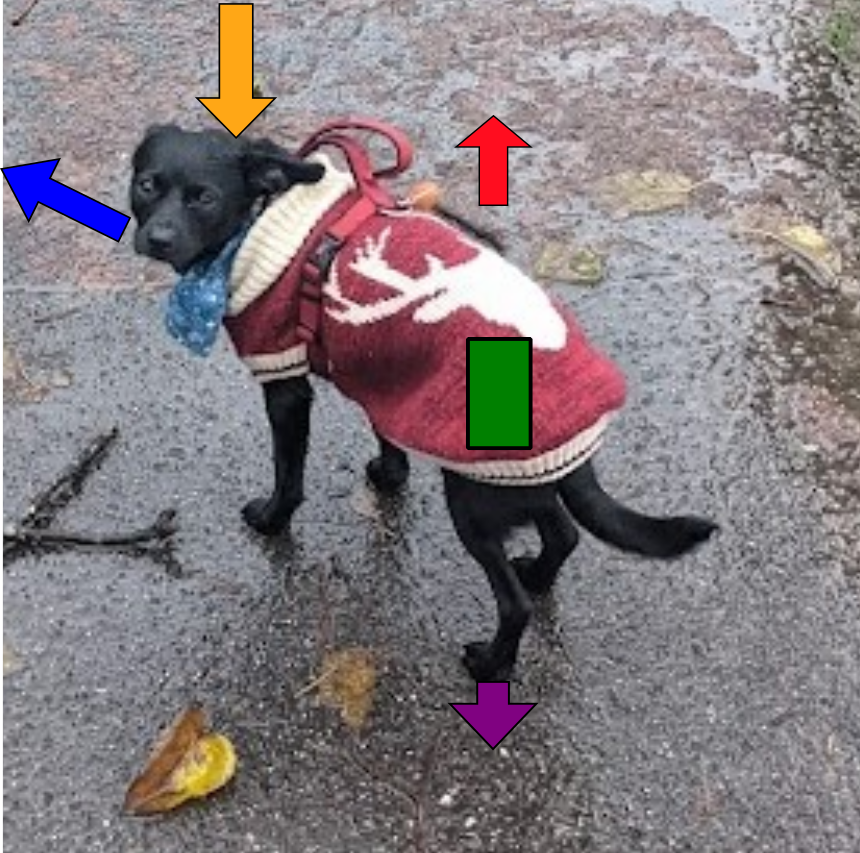def Bowen_Method(B,R_n,G):
H = (R_n-G)/(1+B**-1)
LE = (R_n-G)/(1+B)
return(H,LE)
H,LE=Bowen_Method(5.0,250.0,75.0)
print(f'H = {H:.2f} & LE {LE:.2f} W m^-2')H = 145.83 & LE 29.17 W m^-2Ultimate goal: Predicting and managing surface-atmosphere interactions.
Quantifying the impact of one system on another one.
Understanding a system’s interior dynamics (black box).
Boundary condition:
Simple, homogenous bare soil/rock surface
Complex, vegetated surface (e.g., a forest canopy)
“Two-dimensional”, semi-transparent surface (e.g., a leaf)
Three-dimensional volume (e.g., an animal)
\[ \color{orange}{R_n} = \color{red}{H} + \color{blue}{LE} + \color{purple}{G} \qquad(1)\]

\[ \color{orange}{R_n} = \color{red}{H} + \color{blue}{LE} + \color{purple}{G} \qquad(2)\]

Which component(s) of the energy balance can take negative values?

\[ \color{orange}{R_n} = \color{red}{H} + \color{blue}{LE} + \color{purple}{G} \qquad(3)\]

\[ \color{orange}{R_n} = \color{red}{H} + \color{blue}{LE} + \color{purple}{G} \qquad(4)\]
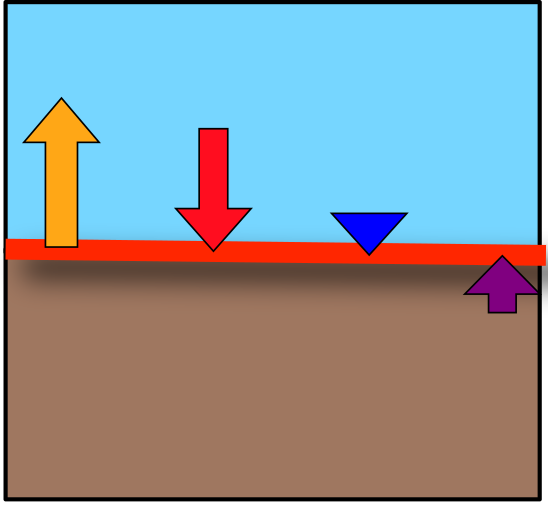
The Bowen Ratio (\(B\)) is used to express the partitioning of net radiation at a surface.
\[ B = \frac{H}{LE} \qquad(5)\]
\[ \color{orange}{R_n} = \color{red}{H} + \color{blue}{LE} + \color{purple}{G} \qquad(6)\]

On a hot sunny day, which surface would you expect to have the largest Bowen Ratio?
\[ B = \frac{H}{LE} \qquad(7)\]
\[ B = \frac{H}{LE} \qquad(8)\]
\[ LE = \frac{R_n-G}{1+B} \qquad(9)\]
\[ H = \frac{R_n-G}{1+B^{-1}} \qquad(10)\]
\[ \color{orange}{R_n} = \color{red}{H} + \color{blue}{LE} + \color{purple}{G} \qquad(11)\]
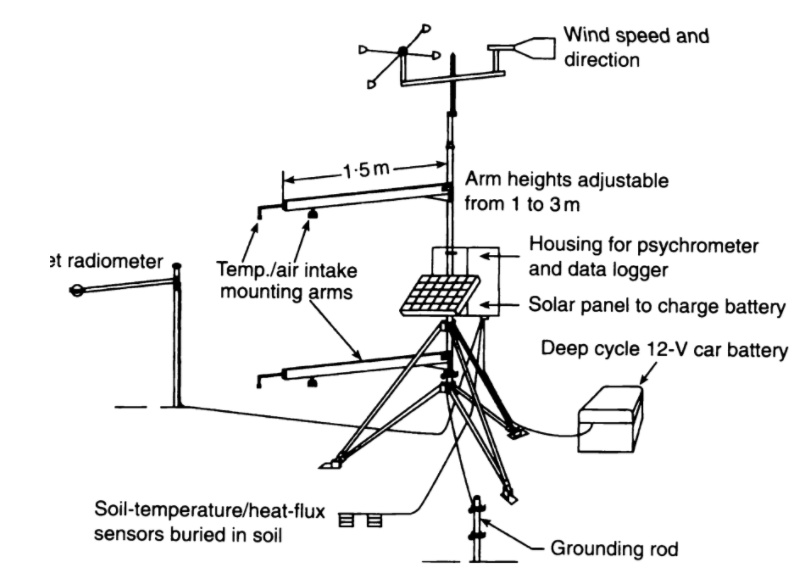
Assuming \(B= 5.0\) with daytime \(R_n = 250 \rm{W m^{-2}}\) & \(B = 75 \rm{W m^{-2}}\), estimate \(\rm{LE}\) & \(\rm{H}\).
Assuming \(B= 4.0\) with daytime \(R_n = -55 \rm{W m^{-2}}\) & \(B = -25 \rm{W m^{-2}}\), estimate \(\rm{LE}\) & \(\rm{H}\).
This method relies on the assumption of Homogeneity.
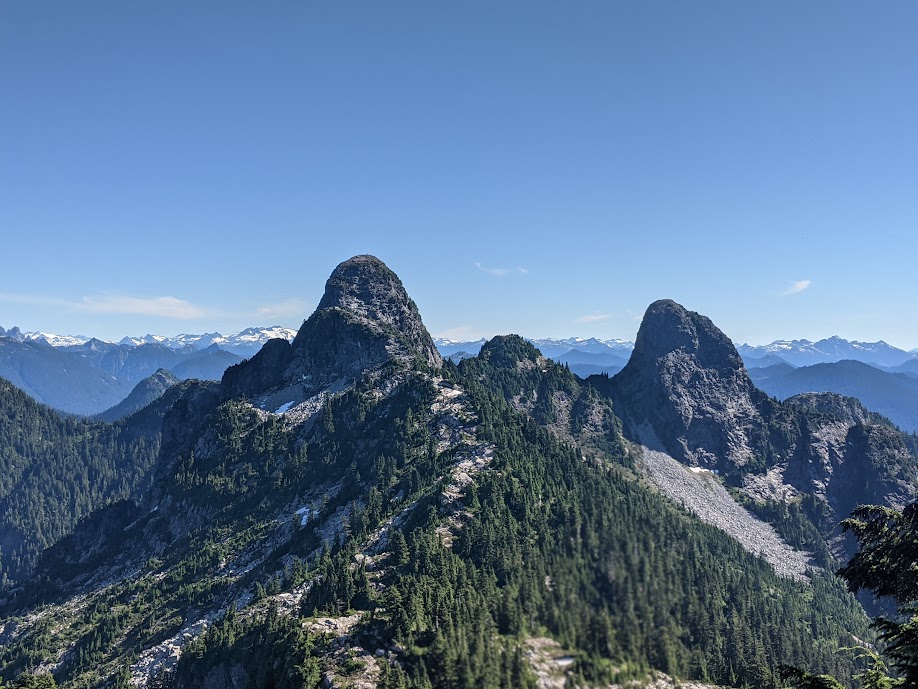
This method relies on the assumption of Homogeneity.

When dealing with more complex, 3D volumes:
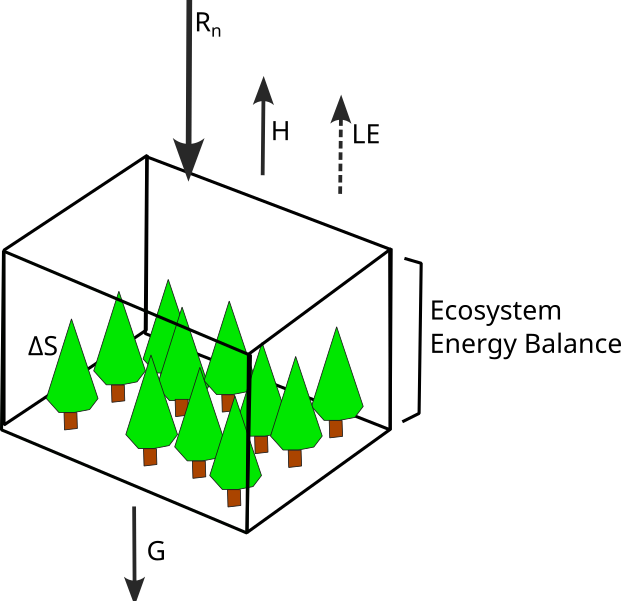
\[ \color{orange}{R_n} = \color{red}{H} + \color{blue}{LE} + \color{purple}{G} + \color{green}{\Delta S} \qquad(12)\]

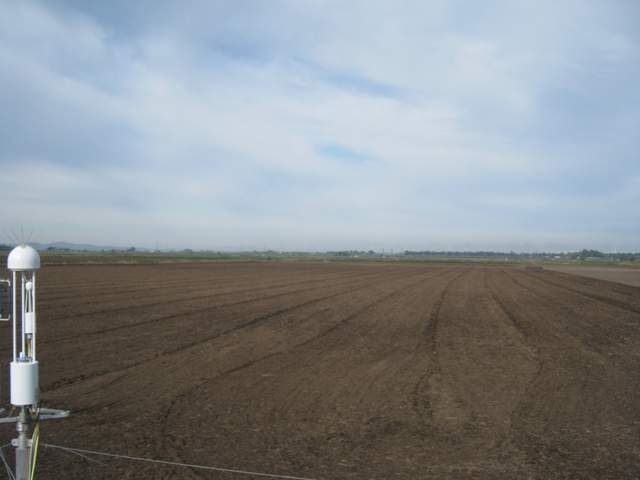
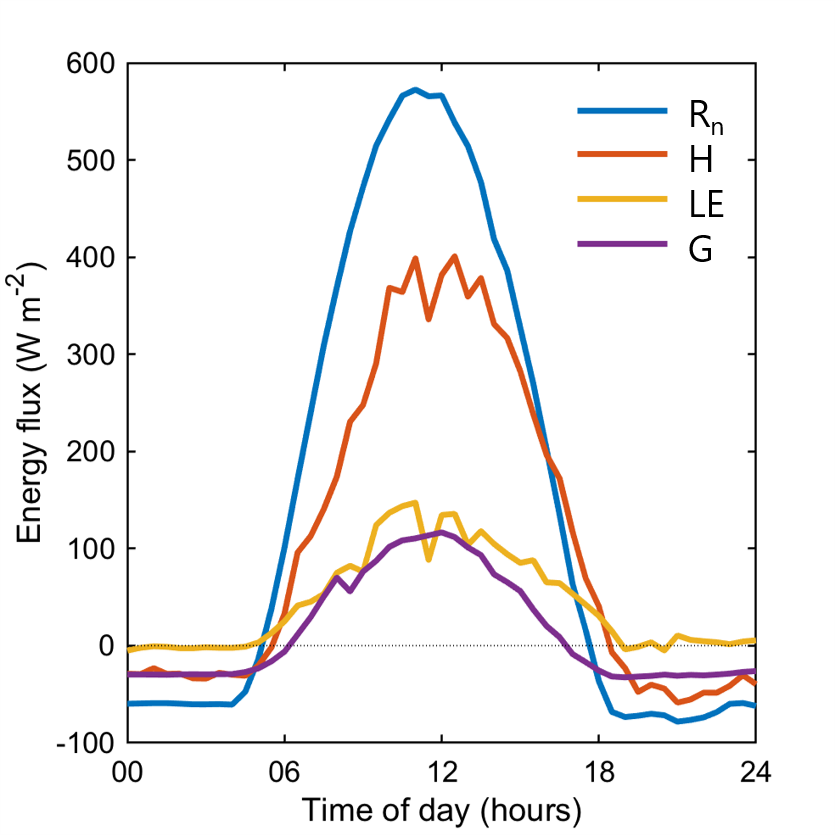
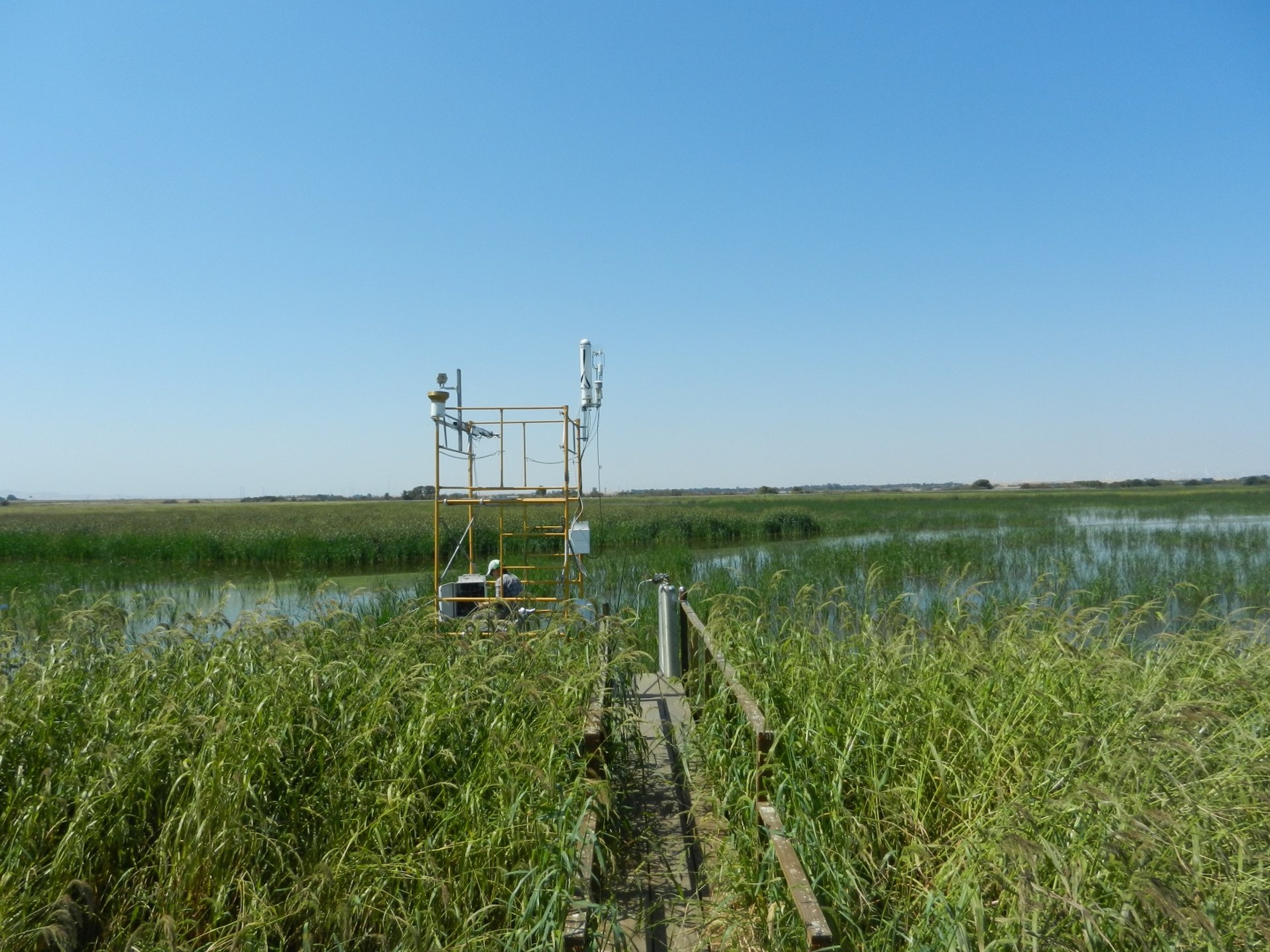

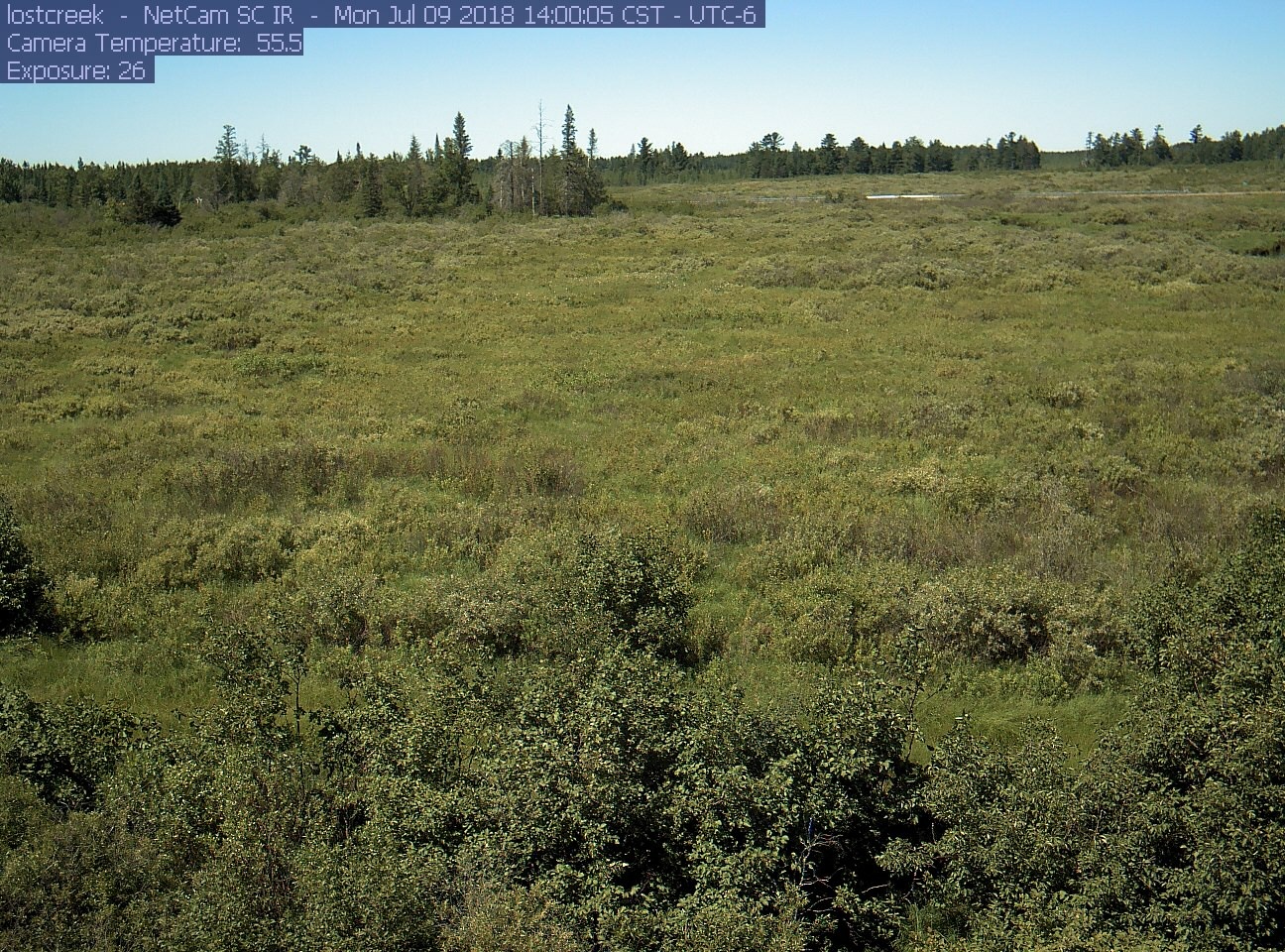



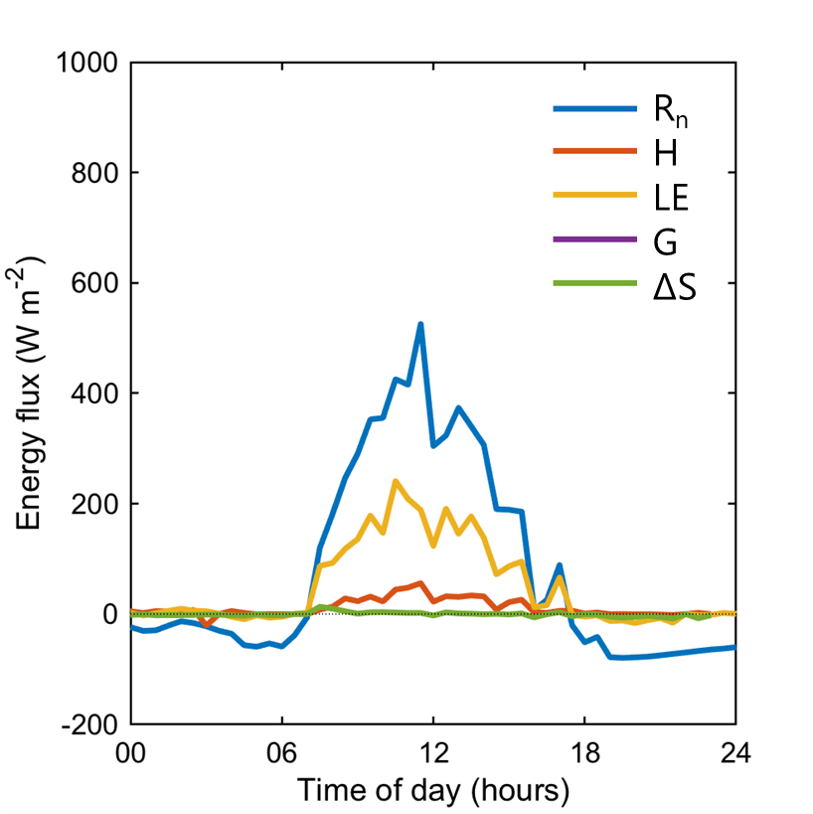

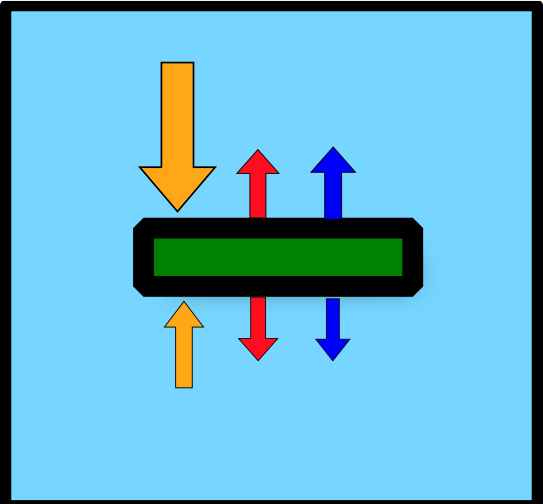
Usually an organism or object (animal, person, building) surrounded by air.
